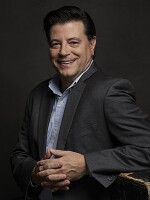Fitch built a prototype of the Phoenix, with plans to build 500.
A one-of-a-kind automobile built by a Connecticut icon goes on the auction block this weekend.

John Cooper Fitch was a dashing figure in the "land of steady habits." He was a decorated World War II fighter pilot, an inventor, and a world famous race car driver.
Fitch won the 1951 Buenos Aires Grand Prix (one of the prizes was a kiss from Eva Peron!) and later helped create Lime Rock Park. He was also a car designer.
When Chevrolet introduced the Corvair in 1959, he designed a sprint kit to make the Corvair faster and more nimble. The Fitch Sprint Corvairs sold well, but in 1966, Fitch had a more radical plan for the Corvair. He called it the Fitch Phoenix.
"He made the Fitch Phoenix a Corvair-based racing car for the street," said Daniel Strohl, who has written about the Phoenix for Hemmings Motor News. "He shortened the wheelbase a little bit," Strohl said, "and he added a Corvair engine that is tuned to about 160 horsepower. I got to ride in it, and it's a very well-built car."
Fitch also switched out the boxy Corvair body with a sleeker, hammered steel, stingray-style body.
Fitch built a prototype of the Phoenix, with plans to build 500. When new automotive safety standards caused Chevy to pull the plug on the Corvair, plans for the Phoenix were also scrapped.
Fitch kept the prototype himself, and until his death in 2012, often drove the Phoenix to vintage car events.
The Fitch Phoenix will be auctioned off on Sunday in Greenwich, where it is expected to fetch anywhere from $200,000 to $400,000.





